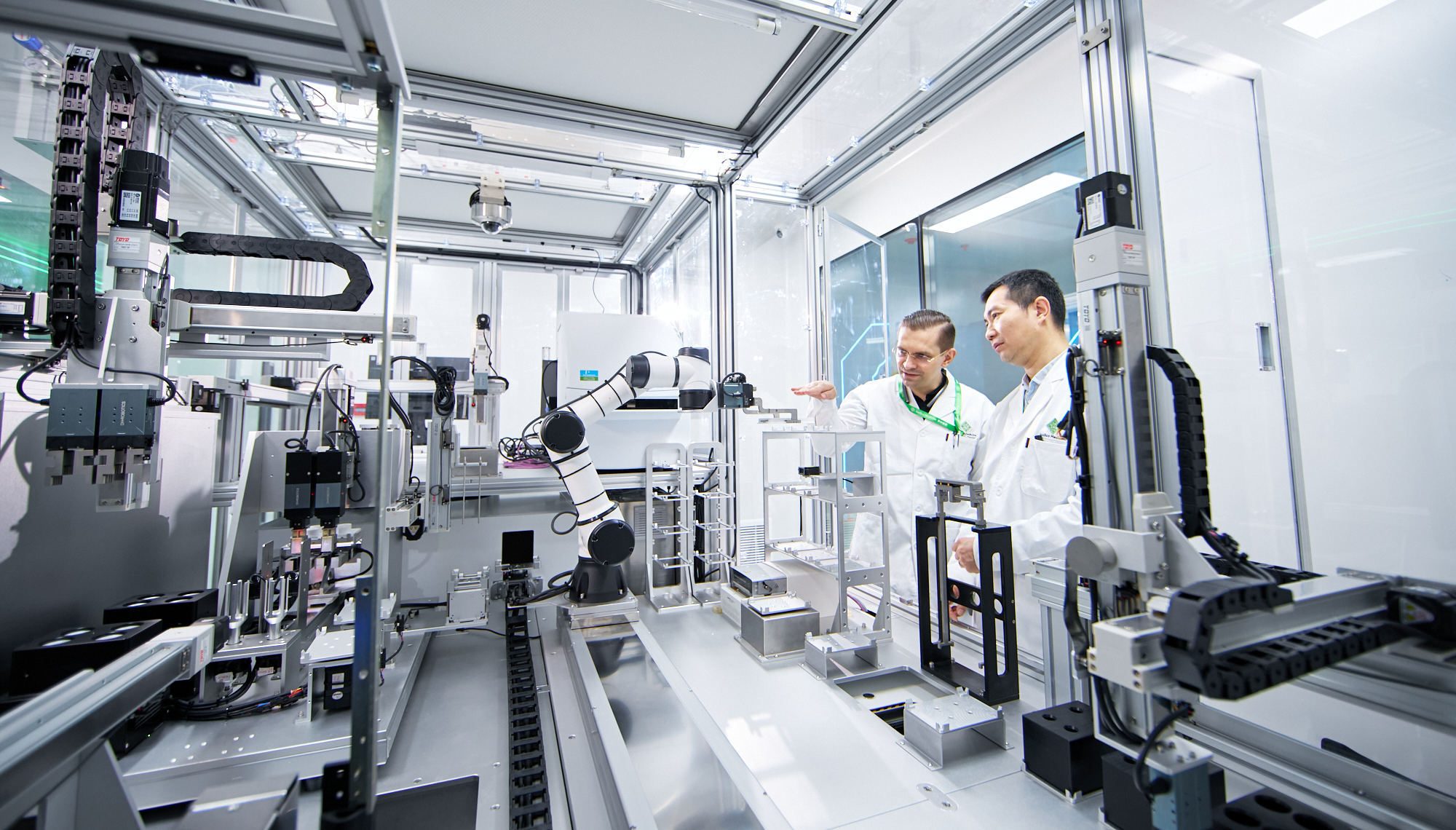
It’s fun to play around with ChatGPT and Midjourney but did you also know big companies are using generative AI right now to shape the way they work?
By generative artificial intelligence (AI) we mean algorithms that can create new content – be it text, audio, video, graphic designs and more. While it’s still too early to accurately predict the future, the pace of advancements in AI models has been impressive to say the least. Some of these applications have proven they have what it takes to change the way entire companies do business.
We’ve taken a look at five different industries to see how they’re using generative AI today to make new discoveries, improve their efficiency, and alter user interactions with their products. We’re pretty confident you’ll be surprised at just how much generative AI is shaping our world right now.
1. Discovering and creating drugs

The first drug fully generated by AI entered clinical trials with human patients in June 2023. Hong Kong-based biotech startup Insilico Medicine created a drug to treat idiopathic pulmonary fibrosis, a chronic disease that causes scarring in the lungs.
Even the founder, Alex Zhavoronkov, was surprised they had gotten this far with the AI.
“When we started developing generative AI for drug discovery, I never expected to see the clinical and preclinical results we have today," he said in a statement about the breakthrough.
Insilico Medicine took the first steps of this journey back in 2020. Although the process wasn’t as simple as giving ChatGPT a few prompts, the AI certainly did most of the heavy lifting.
According to chipmaker Nvidia, Insilico used generative AI in each step of its drug discovery process. The AI helped to identify the molecule that a hypothetical drug could actually target and then generated a list of new drugs that could achieve this. Using this list, the AI estimated how well each of these candidates would perform. The one that made the cut is in the clinical trial being used on flesh and blood humans we see today.
Without AI, this process would have cost more than $400 million and taken up to six years. Thanks to the generative AI, Insilico accomplished the same things for a tenth of the cost in a third of the time, according to NVIDIA.
The results of Insilico Medicine’s clinical trial should be out next year and it predicts that the drug will be made available to patients a few years after that if all goes well.
2. Creating music

We all play an imaginary soundtrack in our heads to accompany us as we’re running errands, right? Or maybe you’re using a pair of the best headphones to give your playlists the sound they deserve. Either way, the music following you around is about to get way more personal.
Just as deep learning technology can be trained on images to create more images, AI can be trained on music to create, yes, you guessed it, more music. However, AI finds it harder to learn about music than it does about pictures. There are several reasons for this, not least that learning about audio is a very data-intensive task. Generating a few seconds of music is the computational equivalent of producing a huge image.
But this didn’t stop music startup LifeScore from partnering with Bentley to create an AI model that can compose a soundtrack based on your driving style. Your journey will become highly personalized in real time as the soundscape responds to how and where the car is being driven. It also considers the conditions you’re in.
LifeScore built its AI sound library by using real sounds, be it a musician playing their instrument in a studio or sending one of their sound engineers to a forest to record a water stream. The AI works by assembling these different building blocks in different ways each time, producing original compositions.
3. Improving car insurance

Before you can go on a road trip with your Bentley, humming along to your custom soundscape, you’ll need to get the right car insurance. AI has got you covered there, too.
Big Four accounting firm PwC wanted to find out if generative AI could help one of its clients in the insurance business. The answer was yes.
The client had a team of estimators and auto body experts whose job it was to assess photos of cars to determine if any of their parts were damaged. This is a labor-intensive task that PwC thought could do with some help from AI.
Together with its client, PwC created three AI models to help with this part of car insurance. The first detected and classified car damages, the second translated the damage into individual parts, and the third retrieved images of similar vehicles (damaged and undamaged) to help estimators evaluate whether or not the part was actually damaged. The AI worked so well that it even managed to catch details that the estimators had initially missed.
PwC estimates that a full implementation of this workflow could improve efficiency for its client by 29%. It’s not hard to envision a future where this technology is rolled out across the insurance industry.
4. Creating digital fashion

First London, Paris, and New York. Now, your GPU can become the next hub pushing the boundaries of fashion.
Generative AI was used to create a realistic virtual fashion runway that was inspired by the distinctive style of iconic designers from the likes of Miu Miu and Balenciaga to show off the tech’s capabilities. This happened during a collaboration between the virtual effects and AI artist Atara and the London College of Fashion’s Fashion Innovation Agency (FIA).
How did they pull this off? First they used Midjourney to generate the design concepts that different AI models trained on. They then overlaid the newly created AI models, clothes, and environments on top of archive footage from an actual fashion show.
The creators’ ultimate aim is to create a tool that allows you to type the name of a designer or the description of a style to see a catwalk video overlaid with the newly generated footage.
5. Making immersive games

Different storylines and quests every time you play a video game. Interactions with NPCs as if you were speaking with a friend. These are just some of the potential upgrades that generative AI is bringing to a game studio’s table.
While we’re yet to see any AAA titles truly revolutionized by generative AI, Chinese game company NetEase said it invested $97 million to create its mobile AI-powered massively multiplayer online (MMO), Justice Mobile.
“Powered by artificial intelligence, NPCs in the game will be more lifelike. And every action taken by players may have an impact on the game plot, the open world's order, and NPCs' endings,” the game developer said in a statement that announced the game’s June 30th release date.
Daniel Ahmad, a director at video game analyst company Niko Partners tweeted that Justice Mobile uses ChatGPT to create unique player-NPC interactions.
“Through AI tech, it would create conversations that are fully voiced, emotive and impactful. For example, you could tell a character their house is on fire and they'd rush home. Or you could cause a rift between two NPCs that are in love,” he wrote.
Through AI tech, it would create conversations that are fully voiced, emotive and impactful.For example, you could tell a character their house is on fire and they'd rush home. Or you could cause a rift between two NPCs that are in love. Players could use text or voice inputsFebruary 16, 2023
As much as we’d love for you (and us) to jump in and try the game out, NetEase said that the game will first be released in mainland China. A global release is in the works but no official dates have been set yet.
Future of generative AI
The five use cases of generative AI we talked about are impressive but by no means unique. There are countless other ways AI is changing the way people work around the world — both positively and negatively.
While the above models mostly enhance the work humans were already doing rather than outright replacing it, it may be wise to keep tabs on how generative AI is being used in your own industry.
Tools such as ChatGPT went from an initial public unveiling at the end of 2022 to releasing a significantly more capable GPT-4 version in a couple of months. Keeping your eye on the ball means you’re more likely to realize when it’s landed in your court.







